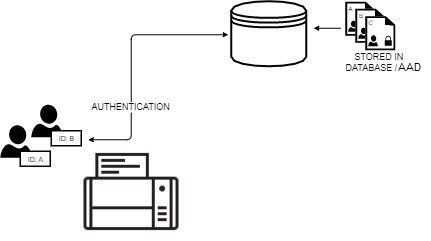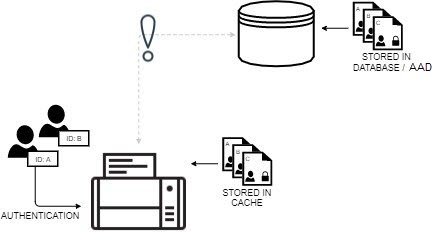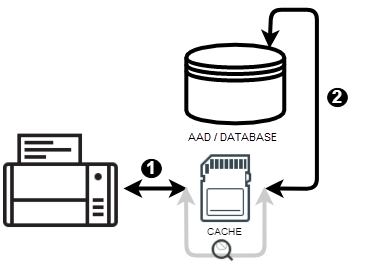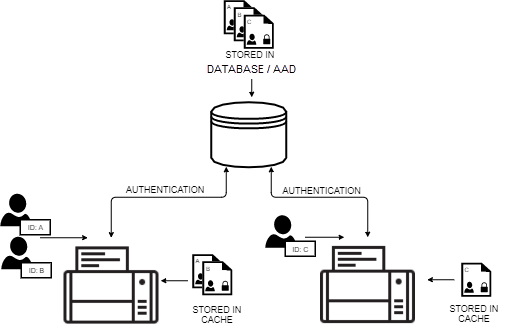Contents ![]()
- What is high availability?
- Dynamic Cache
- Read Cache First
- Tracking and High Availability
- Limitations
What is High Availability?
High Availability is a feature that makes authentication possible, even when the connection with the back end is lost. This feature is implemented via a mechanism that authenticates user details against a cache at the printer, rather than the back end.
 |
 |
| Normal authentication | Authentication when the link to the back end is down |
|---|
Dynamic Cache
- Dynamic Cache
The cache captures your details whenever you authenticate at the printer. The data is purged from the cache if you do not authenticate at the printer for a specified time.
Dynamic cache stores the details of those who authenticate at that printer
Because Dynamic Cache purges cache data when you do not authenticate at the printer for a while, only recent users of the printer can authenticate when the back end is offline. Typically, the printers that do not contain your details are the ones you are least likely to access. As such, Dynamic Cache allows for successful authentication most of the time while keeping network traffic down.
Read Cache First
 |
| Cache first |
|---|
Read Cache First means that the back end is queried only if your details are not found in the cache. When details are found on the cache, the authentication process becomes much faster, because queries across the network are circumvented, and hence, the impact of network latency is blunted. Consequently, the Cache First method is able to boost performance. The performance gains can be quite significant, especially on corporate networks with geographically distributed branches, where the quality of service (QoS) between branches is not optimal. On the downside, cached details are only as accurate as the most recent sync operation.
For example, If you re-assign the Badge ID of an old user who is currently not existing with the organization, to a new user, and the cached details have not been synced recently, there would be a mismatch as the user details would be already existing in the cache under the old user’s name.
Tracking and High Availability
Tracking data is cached at the printer. When the connection with the back end is lost, tracking data is stored in the cache. Whenever the connection is restored, cached tracking data is written back to the back end.
Limitations
With the Dynamic Cache, you must authenticate at least once to allow for the cache to capture your details. As such, when the back end is offline, you may not be able to authenticate at a printer you have not used before.





Post your comment on this topic.